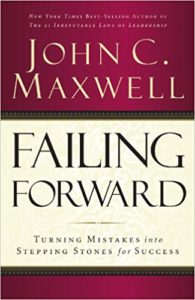Learn to think differently about failure
Usually, failure is considered as the opposite of success. But this is not true. Failure is not to be avoided but to be embraced because it is a necessary part of success. If we learn to embrace failure we will be able to become stronger in the future. In this book, we’ll learn how.
Failure puts you in a better place than from where you started
Most entrepreneurs attribute their success to their ability to persevere after failures and indeed, entrepreneurs fail an average of 3.8 times before they manage to start a successful business. Successful entrepreneurs recognize that even if they fail, they’ll be in a better position than they were when they started. But if they had been stopped by fear of failure they wouldn’t have gotten there.
Failure creates new, often even better opportunities
The first thing we tend to think after a failure is that we didn’t get what we wanted, but often an even better opportunity can arise from that situation. The famous inventor Thomas Edison, for instance, discovered a way to record sound and play it back while he failed to improve the telegraph machine.
Failure as a motivator
Failure can be an excellent motivator. The billionaire founder of Home Depot Bernie Marcus was fired from his role as CEO of hardware chain Handy Dan as a result of internal conflicts n 1978. He decided to never again fall victim to a corporate power struggle and opened a hardware store together with Arthur Blank, a co-worker who had also been fired from Handy Dan. Today their store — Home Depot — is one of the most successful retail endeavors in history.
When failure strikes, take responsibility to fix it
Often failures occur through circumstances outside of our control. It does no good to beat us up because of them. We just have to take responsibility to find new solutions.
The book recounts a story of Greg Horn, whose supermarket was destroyed by the 1997 Kentucky floods. Even though he had insurance for almost everything, he hadn’t any for flood damage. Instead of giving up he decided to get his store up and running. After just 21 days and a cost of $1 million, he had reopened his store successfully.
Another great example is American tennis player Roger Crawford. He was born without many fingers and toes. In spite of his condition, he decided to pursue his dream of becoming a professional tennis player and eventually became the first certified tennis professional with a disability. He attributes his success to the responsibility he took for his own life. He knew another man with his condition who felt bitter about the world and thought of himself of a victim of unfair circumstances which prevented him from succeeding.
Learn from failure, identify the causes
A good example of the power of embracing failures is illustrated in an anecdote from the book Art and Fear, where two groups of a ceramic class were instructed to make art in different ways. The first group would be graded on the quantity of art, and the second group on the quality of a single piece they were instructed to make.
Even though the second group had spent much more time on a single piece, the first group produced pieces of significantly higher quality. What happened? The first group was able to learn from their mistakes and subsequently improve their skills.
Not identifying the origin of our failures puts us at risk of falling into them once again. Instead, identify the causes, learn from them and grow.
Note from Karl: I challenge you to seek out stories of failures that inspire you. Inspiration will get you moving and you will learn to overcome the fear of failure. The best way to get inspiration I know of are (auto) biographies.

